Isolation of Salt-tolerant and Aroma-producing Yeasts from Soybean Paste Starter and Their Fermentation Characteristics
MENG Fanbing, WANG Zhongwei, LI Yuncheng,*, MA Changzhong, LIU Dayu
(1. College of Pharmacy and Biological Engineering, Chengdu University, Chengdu 610106, China;2. Key Laboratory of Coarse Cereal Processing, Ministry of Agriculture and Rural Affairs, Chengdu 610106, China;3. College of Food Science, Tibet Agriculture and Animal Husbandry University, Linzhi 860000, China)
Abstract: In the present study, two salt-tolerant and aroma-producing yeast strains, named Waro03 and Saro47, were isolated from soybean paste starter. Ribosomal DNA sequencing indicated that they were highly homologous with Wickerhamomyces anomalus and Saccharomyces cerevisiae, respectively. Both strains showed good pH and NaCl resistance. Waro03 showed good growth in the medium containing 14% NaCl (m/m) whereas Saro47 and commercial Zygosaccharomyces rouxii AS2.180 could grow well only in the medium containing 12% NaCl (m/m). Saro47 produced large amounts of alcohols, esters, aldehydes and acids, while Waro03 produced large amounts of esters, alcohols, phenols and acids. NaCl could significantly inhibit the production of alcohols such as 3-methyl-1-butanol and phenylethyl alcohol, esters and furanones by Waro03, but significantly increased the production of aldehydes, acids and phenols. NaCl did not affect ethanol production. Saro47 showed similar aroma-producing characteristics and NaCl tolerance to AS2.180. The results of this study suggested that W. anomalus Waro03 looks promising as a starter culture for soy sauce and paste fermentation due to its capability of producing esters and tolerance to salts
Keywords: salt-tolerant; yeast; isolation; fermentation characteristics
Yeast is an important microorganism used in food brewing. More than 2 000 yeast species have been identified in the nature[1], and they are mainly classified asSaccharomycesand non-Saccharomyces(or nonconventional) yeast[2-4]. Non-Saccharomycesyeasts mainly and significantly contribute to the overall aroma profile for the brewing of foods. For example,Debaryomyces hanseniiis an important yeast strain principally used for flavor formation during sausage making[5];Zygosaccharomyces rouxiiandTorulopsis versatilisare essential for the flavor development of soy sauce and paste[6-7].
Different foods require different fermentation characteristics of the yeast. Soy sauce and paste brewing are usually performed at high concentrations of salt (as high as 18%,m/m), so the characteristics of salt-tolerance are considered to be significant for yeasts. Salt-tolerant yeast strains are added to improve the flavor, an important factor used to judge the quality of soy sauce and paste[8]. The brewing of soy sauce and paste often involves mixed cultures of many types of yeast strains, includingSaccharomycesand non-Saccharomycesspecies[9-10]. In the moromi fermentation stage of soy sauce and paste, the yeasts metabolize different sugars and amino acids to produce various alcohols and esters, and these compounds produced could be further used to synthesize some other aroma components such as furanones and pyrazines[11]. In addition, some yeast strains are autolyzed at the later stage of fermentation due to the change in the survival environment such as a pH decrease and sugar utilization[12]. The autolysis increases the concentrations of amino acids, peptides, nucleotides and some other small molecule substances, which could improve the flavor of the sauce and paste.
Z. rouxiiandCandida versatilisare the most studied yeast strains in soy sauce and paste brewing, due to their high salt tolerance and abundant aroma production[13-15]. Some other yeast strains also contributed greatly to soy sauce and paste flavor. In Chinese soy sauce brewing, the yeasts ofKluyveromyces,Saccharomycopsis,PichiaandWickerhamomycesspecies have been identified[16]. Therefore, isolation of salt-tolerant and aroma-producing yeasts is of great significance for soy sauce and paste brewing. In this study, we isolated two yeasts,SaccharomycesandWickerhamomycesspecies, from the soybean paste starter, and investigated the fermentation characteristics and aromaproducing properties at different salt concentrations, aiming to screen out salt-tolerant and aroma-producing yeasts for soy sauce and paste brewing.
1 Materials and Methods
1.1 Materials and reagents
Soybean paste starters were collected from local household in Liaocheng city;Z. rouxii2.180 was purchased from China Center of Industrial Culture Collection (CICC?1379); Yeast extract, peptone, glucose, and NaCl were purchased from Chengdu Kelong Chemicals Co. Ltd.; Rapid Yeast Genomic DNA Isolation Kit was purchased from Shanghai Sangon Biotech; All the other chemicals and reagents used in this study were of analytical grade.
1.2 Instrument and equipments
UV-5200 ultraviolet spectrophotometer was purchased from Shanghai Metash Instruments Co. Ltd.; 3730XL DNA analyzer was purchased from Applied Biosystems (Foster City, CA, USA); SPME automated sampler equipped with 65 μm polydimethylsiloxane/divinylbenzene (PDMS/DVB) was purchased from Supelco, Inc., (Bellefonte, PA, USA); 7890A-5975C Gas chromatography-mass spectrometer (GC-MS) (USA) was coupled with an HP-INNOWAX column (60 m × 0.25 mm, 0.25 μm).
1.3 Methods
1.3.1 Isolation of yeast stains and culture conditions
Ten grams of the sample were suspended in 200 mL of sterile water and then diluted to 10-3, 10-4and 10-5. 100 μL of the dilutions was pipetted to cover the YEPD plates (1% yeast extract, 2% peptone, 2% glucose and 2% agar) with 0.01% chloramphenicol and then incubated at 30 ℃ for 3 d. The colonies with typical morphological characteristics of yeast were selected and observed under a microscope. The strains were purified by streaking and maintained on the YEPD plates at 4 ℃. For long-term storage, the strains were frozen at -80 ℃ in 15% glycerol. Salt-tolerant screening of yeast strains was performed in YEPD medium (1% yeast extract, 2% peptone and 2% glucose) with different concentrations of sodium chloride (NaCl) (8%, 10%, 12%, 14%, 16% and 18%).
1.3.2 Yeast identification
Yeast identification was performed by sequencing the D1/D2 domain of the large subunit (26S) of rDNA. Genomic DNA was extracted from yeast the Rapid Yeast Genomic DNA Isolation Kit according to the manufacturer’s instructions provided in the kit. The D1/D2 domain of the 26S rDNA was amplified by using the universal primers NL1 (5’-gcatatcaataagcggaggaaaag-3’) and NL4 (5’-ggtccgtgtttcaagacgg-3’). PCR products were sequenced by Shanghai Sangon Biotech Co. Ltd. (China) using an ABI 3730XL DNA analyzer. The 26S rDNA sequence was blasted in NCBI BLAST (https://blast.ncbi.nlm.nih.gov/Blast.cgi), and phylogenetic analysis was performed using the MEGA7 software. The phylogenetic trees were constructed using maximum likelihood methods according to the methods described by Kumar et al.[17].
1.3.3 The resistance of the yeast strains under different stress conditions
Salt-tolerance capability was evaluated by measuring the growth via OD660nmin YEPD medium with NaCl at the concentrations of 10%, 12%, 14%, 16%, 18% and 20%, respectively. Cultivation was carried out at 30 ℃ for 5 d in a rotary shaker with an agitation speed of 160 r/min. The inoculum size was adjusted to an OD660nmof 0.05.
The pH tolerance was evaluated by measuring the growth of OD660nmin YEPD medium with 10% NaCl and pH values of 3.5, 4, 4.5, 5, 6 and 7, respectively. The pH was adjusted by using 3 mol/L HCl or 5 mol/L NaOH solution. The cultivation conditions were the same as those used for the salt-tolerance evaluation.
1.3.4 Aroma-producing evaluation
After activating the culture in YEPD plates at 30 ℃ for 14-16 h, the yeast strain was inoculated into malt extract medium (13% malt extract, pH 6.0) and malt extract medium containing 10% NaCl for fermentation. The fermentation was performed at 30 ℃ in a 500 mL flask using a rotary shaker at a speed of 160 r/min for 1 d, followed by static culture for 2 d. The fermentation broth was centrifuged at 9 000 r/min for 5 min, and the supernatant was collected and saved for aroma analysis.
Aroma analysis was performed by using SPME-GC-MS according to the method described by Feng et al.[18]with some modifications. An SPME was employed for the extraction of aroma compounds. Aliquots (8 mL) of the samples were transferred into 15 mL gas-tight glass vessels and saturated with 2 g of NaCl. After being equilibrated at 50 ℃ for 30 min, the fiber was inserted into the GC injector for 5 min at 250 ℃ to desorb the analytes. Analysis of the aromas was performed using a GC-MS system. Helium was used as the carrier gas with a flow rate of 1.0 mL/min. The split ratio was 2:1. The initial temperature was maintained at 40 ℃ for 4 min, raised by 5 ℃/min to 65 ℃, and then raised by 6 ℃/min to 250 ℃, where it was maintained for 16 min isothermally. The ion source and transfer line temperatures were 230 ℃ and 250 ℃, respectively. The ionization energy, detector voltage, scan range and scan rate applied for the analysis were 70 eV, 350 V, m/z 35-450 and 3.46 scans/s, respectively. The aroma profiles were numbered by #1, #2, #3……#46.
1.4 Statistic Analysis
General data analysis was performed in Microsoft Office 2010. Principal component analysis (PCA) of the relative content of aroma compounds was performed to determine the relationship amongst the samples, using vegan in R (version 3.5.0).
2 Results and Analysis
2.1 Yeast isolate and identification of yeast strains
Soybean paste (doujiang) is a traditionally fermented food in China[19]. Soybean paste is usually eaten directly with a meal or as a seasoning during cooking. It is popular because of its high flavor and health benefits[20]. Yeast significantly contributes to the flavor of soybean paste. Chinese traditional soy bean paste brewing is usually performed with high concentrations of salt (as high as 18%, m/m) so that many yeast strains could not grow or ferment well. Therefore, isolation of salt-tolerant yeast with good aroma production is very important.
In this study, a total of 7 yeast colonies were selected from the soybean paste starter. Among them, two strains showed significant salt-tolerant and aroma-producing characteristics, and they were named Waro03 and Saro47, respectively. After extracting the yeast genome, the 26S rDNA was amplified and sequenced (Fig. 1). Through BLAST, the phylogenetic trees were constructed (Fig. 2). From the results, the strains Waro03 and Saro47 were highly homologous with the strains Wickerhamomyces anomalus KY849582.1 and Saccharomyces cerevisiae KY471391.1, respectively, and their similarities were 100%. W. anomalus was formerly named Pichia and H. anomala, and it was usually identified from koji of soy sauce[16], Chinese liquor (Baijiu)[21], red wine[22]and cocoa bean fermentation[23]. This yeast species is known to produce esters, a class of important aroma components in fermented food. S. cerevisiae also exists in various traditional brewed foods such as soy sauce and soybean paste[24]. S. cerevisiae could produce higher content of alcohols from amino acids via the Ehrlich pathway[25]to enhance the flavor of the products.
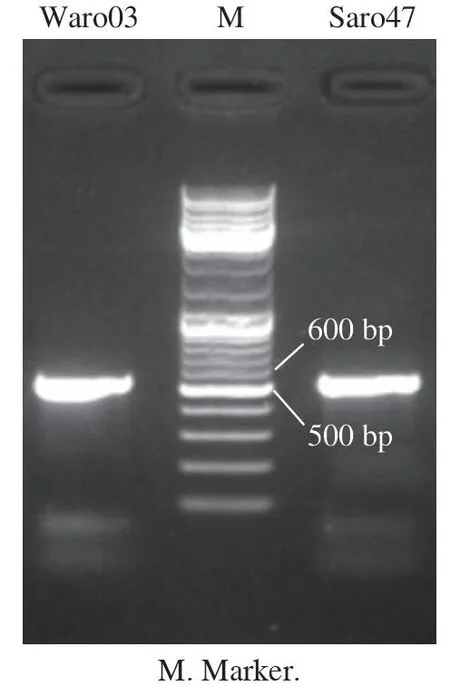
Fig. 1 Electrophoretic patterns of strains Waro03 and Saro47
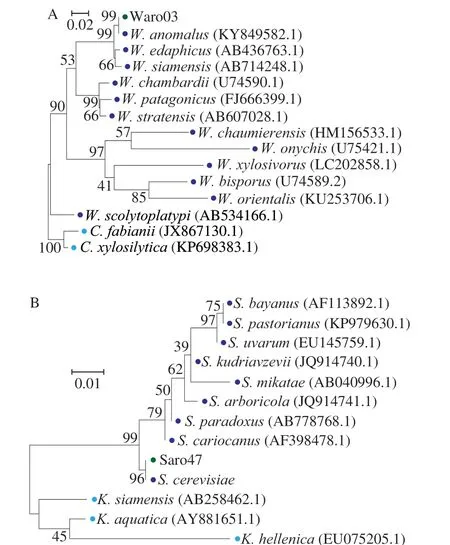
Fig. 2 Phylogenetic analysis of Waro03 (A) and Saro47 (B)
2.2 The resistance of the yeast strains under different stress conditions
Soy sauce and paste brewing is usually performed in high concentrations of salt, so the characteristic of salt-tolerance is considered to be a significant advantage for the yeasts[26]. From the results shown in Fig. 3A, the strains Waro03 and Saro47 showed better salt tolerance than the commercial aroma-producing Z. rouxii strain AS2.180[27]. When the NaCl concentration was lower than 10% (m/m), both strains Waro03 and Saro47 showed similar growth trends, but the strain AS2.180 showed slower growth. When the salt concentration was increased to 12%, the growth of the strain Saro47 was significantly lower than that of the strain Waro03. When the salt concentration was increased to 14% (m/m), both strains Saro47 and AS2.180 could hardly grow, but the strain Waro03 could grow slightly.
pH is another important influencing factor for microbe fermentation during soy sauce and paste brewing. During fermentation, some bacteria like Lactobacillus produce organic acid, which then decreases the pH of the mash[9]. Therefore, a good aroma-producing yeast strain should be able to resist a pH decrease. The results of pH tolerance are shown in Fig. 3B, strain Waro03 and Saro47 showed slightly better pH tolerance than the strain AS2.180. However, when pH was increased to 5, the Saro47 showed equivalent growth intensity with that of AS2.180, and their growth rates were significantly lower than that of the strain Waro03.
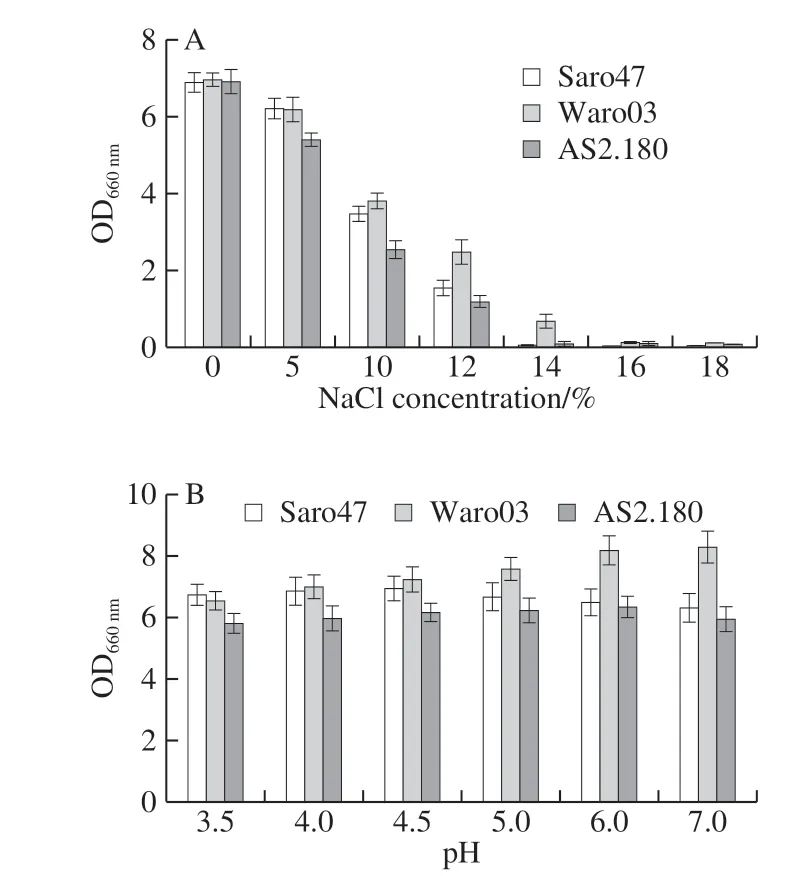
Fig. 3 Effects of sodium chloride (A) and pH (B) on the growth of yeast strains
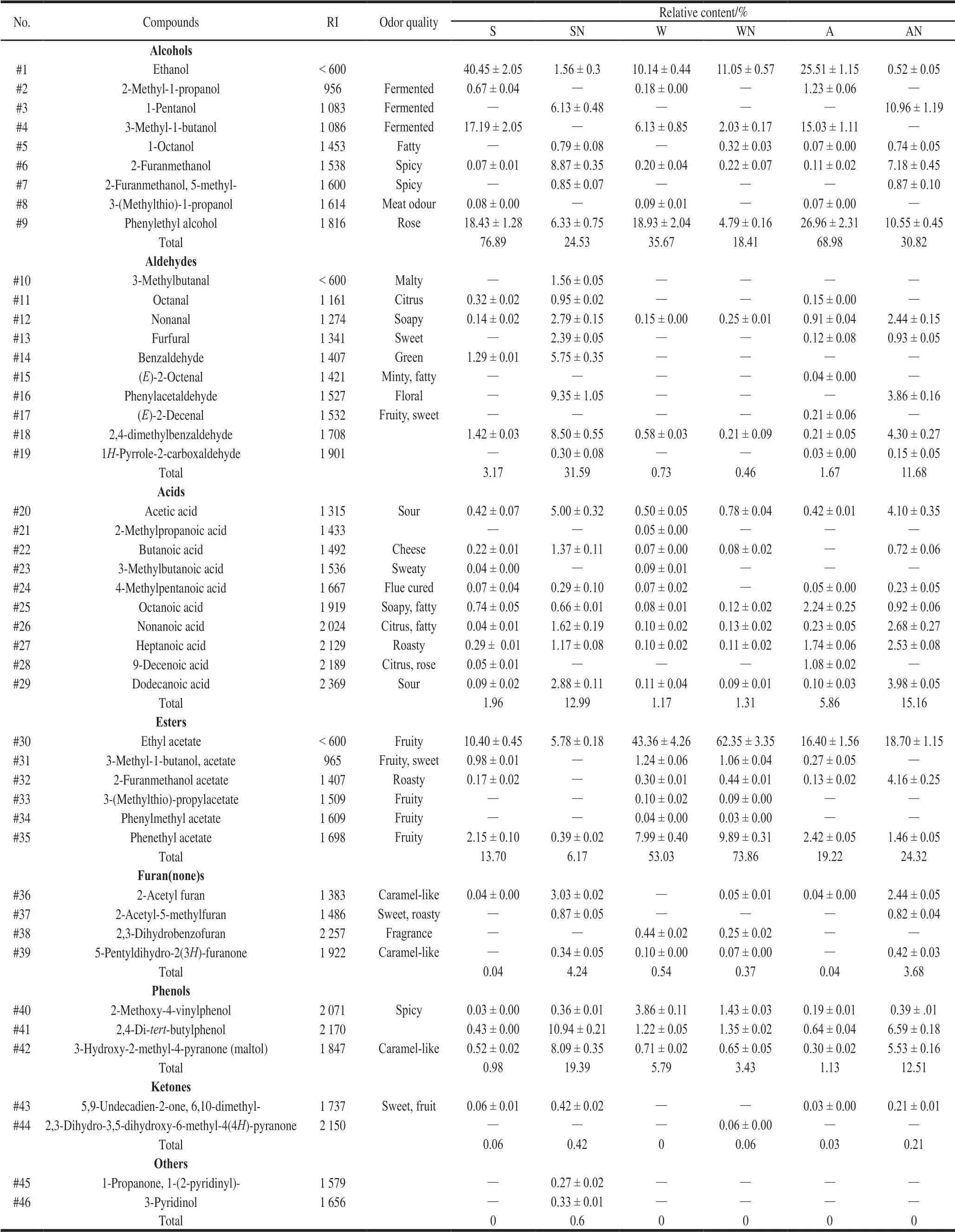
Table 1 Aroma profiles of the strains under sodium chloride stress
2.3 Aroma-producing characteristics
The aroma-producing properties of the strains were analyzed using SPME-GC-MS, and the results are shown in Table 1. In total, 28, 28 and 30 volatiles were detected in Saro47, Waro03 and AS2.180, respectively. When 10% NaCl was added, the volatiles in Saro47, Waro03 and AS2.180 were 32, 26 and 29, respectively (Table 1), and most of these compounds have been reported in soy sauce and paste previously[28-31], such as 2-methyl-1-propanol, 3-methyl-1-butanol, 2-methyl-1-butanol, ethanol, benzaldehyde, furfural, acetic acid, 4-methylpentanoic acid, ethyl acetate, and maltol, etc.
When no NaCl was added, the strain Saro47 had the highest contents of alcohols (76.89%), esters (13.70%), aldehydes (3.17%) and acids (1.96%) (Table 1); the strain Waro03 had the highest contents of esters (53.03%), alcohols (35.67%), phenols (5.79%) and acids (1.17%) (Table 1); and the strain AS2.180 had the highest contents of alcohols (68.98%), esters (19.22%), acids (5.86%), aldehydes (1.67%) and phenols (1.13%) (Table 1). All of these strains produced large amounts of alcohols, especially ethanol, 3-methyl-1-butanol and phenylethyl alcohol. However, among them, S. cerevisiae strain Saro47 produced the highest amounts of ethanol, but the W. anomalus Waro03 produced the lowest amount of ethanol as compared to those of the other two strains. The Z. rouxii strain AS2.180 produced the highest amount of phenylethyl alcohol. In addition, the strain Waro03 produced the highest amounts of ethyl acetate and phenethyl acetate as compared to those of the other two strains (Table 1).
However, when 10% NaCl was added, the aromaproducing properties of the strains changed obviously (Table 1 and Fig. 4). Alcohol production of the strains Saro47, Waro03 and AS2.180 was significantly decreased by 68.1%, 48.4% and 55.3%, respectively, but the acid production was increased by 6.6-, 1.1- and 2.7-fold, respectively, as compared to the fermentation without NaCl addition (Table 1 and Fig. 4). The sodium chloride could significantly inhibit alcohol, ester and furan(none) production of the strains Saro47 and AS2.180, especially, the production of ethanol, 3-methyl-1-butanol, phenylethyl alcohol, phenethyl acetate, 3-methyl-1-butanol-acetate and 2-acetyl furan, etc. (Fig. 4). However, the production of aldehydes, acids and phenols was significantly increased, especially the production of nonanal, phenylacetaldehyde, 2,4-di-tert-butylphenol, maltol, etc. For the W. anomalus strain Waro03, NaCl addition also inhibited alcohol production such as 3-methyl-1-butanol and phenylethyl alcohol, but did not affect ethanol production (Table 1). Additionally, the other aromas were not significantly inhibited by the sodium chloride. However, except for the production of esters, the production of other aromas of the strain Waro03 was lower than those of the strains Saro47 and AS2.180, especially for the acids and aldehydes.

Fig. 4 Aroma-producing capacity of the strains in responses to the sodium chloride stress
2.4 PCA of aroma compounds
To further investigate the different aroma-producing characteristics among the strains, we performed the PCA. As shown in Fig. 5A, the two first principal components, PC1 and PC2, accounted for 78.24% of the total variance (57.85% and 20.39%, respectively). PC1 was positively correlated with 5-pentyldihydro-2(3H)-furanone, 1-octanol, 2,4-di-tert-butylphenol, maltol, etc., while PC2 was positively correlated with 3-(methylthio)-propylacetate, 2,3-dihydrobenzofuran, 2-methoxy-4-vinylphenol, etc. As shown in Fig. 5B, the S. cerevisiae strain Saro47 andZ. rouxiistrain AS2.180, a commercial aroma-producing yeast commonly used in soy sauce fermentation in China, gathered together due to the fact that both of them could produce the same alcohols, acids and furan(none)s, and showed the same response to sodium chloride stress (Table 1). Previously, Ca?as et al.[22]and Hui et al.[21]reported that theW. anomalusstrain existed in red wine and Chinese liquor (Baijiu). This strain is well known for ester production, and our results also showed that theW. anomalusstrain Waro03 produced the highest content of esters among the three strains. More importantly, this strain showed better NaCl tolerance that the other strains. According to our knowledge from the production enterprises, the ester amore in Chinese type of high salt and dilute state soy sauce and flour paste were often insufficient. Therefore, theW. anomalusstrain Waro03 is a potential aroma-producing yeast that could be used in soy sauce and flour paste fermentation.
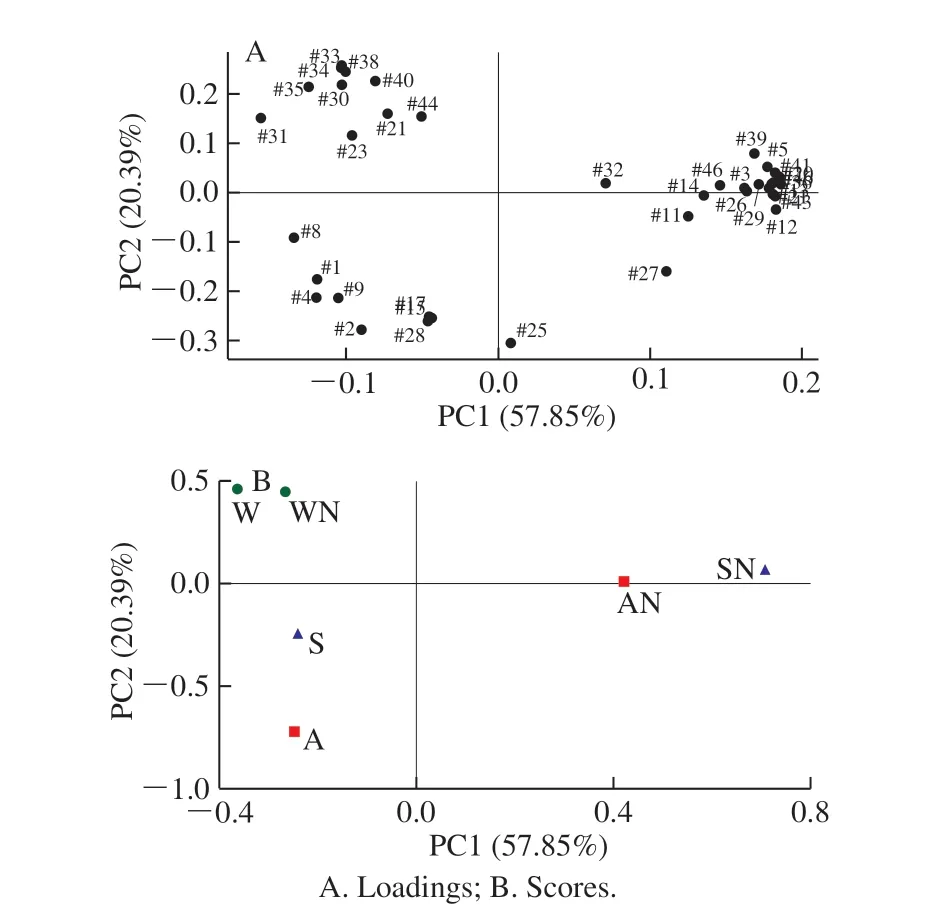
Fig. 5 PCA of aroma compounds
3 Conclusion
TheW. anomalusstrain Waro03 andS. cerevisiaestrain Saro47 were isolated from soybean paste starter. Both strains showed good pH and sodium chloride resistance. The strain Saro47 mainly produced alcohols, esters, aldehydes and acidswhile the strain Waro03 mass produced esters, alcohols, phenols and acids. Sodium chloride could significantly inhibit the production of alcohol, ester and furan(none) for the strain Saro47, but the production of aldehydes, acids and phenols was significantly increased. For the strain Waro03, sodium chloride could inhibit alcohol production, but did not affect ethanol production. The strain Saro47 showed similar aromaproducing characteristics and sodium chloride stress response to those of theZ. rouxiistrain AS2.180, a commercial aromaproducing yeast commonly used in soy sauce fermentation in China. The results also indicated that theW. anomalusstrain Waro03 can be a potential aroma-producing yeast that could be used in soy sauce and flour paste fermentation due to its high esters production capacity and high NaCl tolerance.

